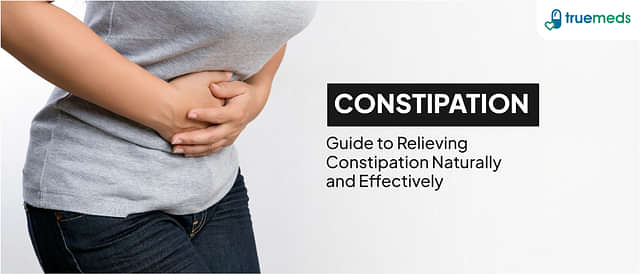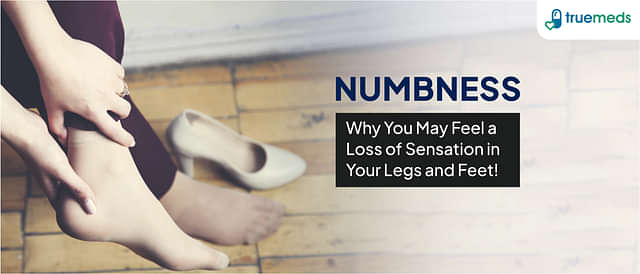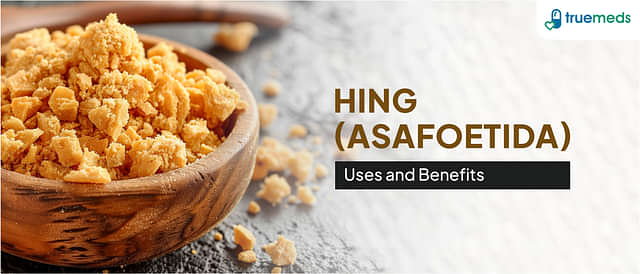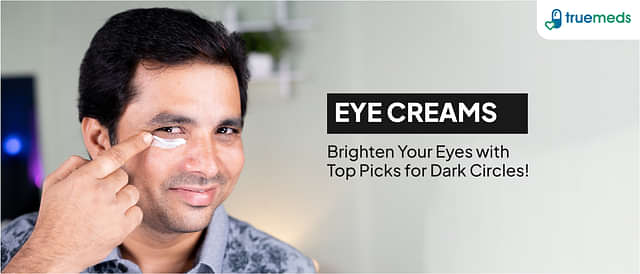Urinary Incontinence: Symptoms, Causes, Types And Treatment
Last updated on : 07 May, 2025
Read time : 9 min
What is urinary incontinence?
When a person is unable to regulate the flow of urine, they are suffering from urinary incontinence. There is a wide spectrum of intensity, from leaking urine without knowing it when you cough or sneeze to always feeling like I have to pee that you can’t make it to the restroom in time.
There are several possible causes, including stress factors such as coughing and pregnancy, as well as obesity.
Urinary incontinence is more common in women over the age of 50, but it can affect anyone. Often, bladder incontinence can be alleviated or managed.
What causes bladder control issues in the body?
The bladder stores pee in the body. The urethra is a tube through which urine travels after it is expelled from the bladder during urination. In addition, the muscles surrounding the urethra loosen. This makes it easier for urine to exit the body. Urine can leak from the bladder if the muscles around the bladder don’t perform properly. When the muscles relax unexpectedly, bladder incontinence is the result.
How common is female incontinence than male incontinence?
A woman is three times as likely as a man to suffer from urge urinary incontinence. Pregnancy, childbirth, and menopause all play a role in this. A woman’s bladder control may be affected by any of these life events. Bladder incontinence may be caused by pregnancy, however, the symptoms usually subside once the baby is born. After childbirth, some women develop bladder problems due to the tension on the pelvic floor muscles. A weaker bladder can lead to a greater chance of leaking. Menopause is a time of great physical and emotional transition for women. During menopause, your hormones (especially oestrogen) shift, which might affect your bladder control.
Male incontinence is less common than in women, yet it is possible.
Symptoms of urinary incontinence
Discharge (of pee) is the most common symptom. The types of incontinence will determine when and how this occurs.
Types of urinary incontinence
1. Stress incontinence
The term “stress” in this context refers to physical pressure, rather than psychological stress. Urinary incontinence may occur when the bladder and the muscles that control it are suddenly put under a lot of pressure.
Stress incontinence can be triggered by the following actions:
- wheezing, sniffling, or giggling
- heavy work
- exercise
2. Urge incontinence
A sudden urge to urinate can lead to urgency incontinence, which occurs when a person is unable to retain their urine long enough to make it to the bathroom.
Urinary incontinence may be triggered by:
- change of posture abruptly
- sound of a river or creek
- in the middle of an orgasm
3. Overflow incontinence
Overflow incontinence occurs when a bladder that is always full leaks little amounts of urine. If a guy has an enlarged prostate, he may have difficulty emptying his bladder. Diabetes and spinal cord injuries can also lead to incontinence of the urinary system.
Patients may suffer “dribbling” or “continuous dripping” of urine from the urethra as a result of urinary incontinence.
4. Functional incontinence
Many older persons with normal bladder control are affected by functional incontinence. Due to aches and pains in their joints, they have a hard time making it to the bathroom.
5. Total incontinence
This could suggest that the person is constantly leaking pee, or that they have bouts of uncontrollable urination. Congenital defects, spinal cord or urinary system injuries, or fistulas between the bladder and the vagina are all possibilities for the patient.
Causes of Urinary incontinence
Your inability to control your urination could be caused by a variety of factors. If you’re a guy or a woman, you may have different reasons for these symptoms. Some of the causes are transitory health issues that typically resolve themselves after treatment. Medical problems that are long-term (chronic) can lead to bladder incontinence. As a symptom of a long-term medical problem, bladder problems may have to be dealt with over time.
Temporary or short-term causes of urinary incontinence can include:
- Urinary tract infections (UTIs): An infection in your urinary system (urethra, ureters, bladder, and kidneys) can cause pain and increase the frequency with which you need to urinate. Urinary incontinence is a common side effect of therapy.
- Pregnancy: As the uterus grows during pregnancy, it exerts more pressure on the bladder. Bladder incontinence is a common urine problem for pregnant women, although it usually subsides within a few weeks of giving birth.
- Medications: Certain drugs, such as diuretics and antidepressants, may cause bladder problems as a side effect.
- Drinks: Certain beverages, such as coffee and alcohol, can cause you to urinate more frequently. Your need to urinate more regularly decreases when you stop drinking these beverages.
- Constipation: Having problems controlling your bladder might be caused by chronic constipation (stool that is firm and dry). Understanding the types of constipation can help in managing this issue effectively.
Chronic or long-term causes of bladder incontinence can include:
- Pelvic floor disorders: Having a problem with your pelvic floor muscles can affect how your organs, particularly your bladder, operate.
- Stroke: The muscles that govern your urinary system can also be affected.
- Diabetes: Having diabetes causes your body to create a lot of pee. Increased pee production can cause urinary problems. The bladder can also be affected by peripheral neuropathy.
- Menopause: For women, menopause is a time of fast hormonal changes, as well as weakened pelvic floor muscles – all of which can happen as you age, too.
- Multiple sclerosis (MS): There is a risk of bladder leakage in people with multiple sclerosis (MS) because of a loss of bladder control.
- Enlarged prostate: Bladder control difficulties might arise as a result of an overly big prostate. BPH, or benign prostatic hyperplasia, is another name for this disorder.
- After prostate cancer surgery: Stress incontinence can occur as a result of sphincter muscle damage sustained during prostate cancer surgery.
Diagnosis of Urinary incontinence
Your symptoms can frequently tell your doctor the sort of urine incontinence you have, which is critical information to have. Treatment decisions will be guided by this data.
Your doctor will likely begin with a comprehensive examination and review of your medical history. Coughing may be used to demonstrate bladder problems if you are found to be able to do so.
In addition, your doctor may do the following tests to rule out other possible causes of bladder incontinence, such as:
- Physical exam: Early in the diagnosing process, your healthcare professional will often do a physical examination. Your doctor will conduct a physical examination to find out what is causing your urinary incontinence. When it comes to checking a man’s or woman’s reproductive organs, this could include a pelvic exam or an examination of the prostate.
- Urinalysis- Checking for infection, blood or other abnormalities in a urine sample is standard procedure.
- An ultrasound of your bladder: Using sound waves to create images of your internal organs, an ultrasound scan can provide a clear picture of the condition of your bladder. This non-invasive imaging test will allow your doctor to see what’s in your bladder and how well it empties.
- Stress test: You’ll be asked to cough during this test to see if any urine leaks or not. To determine if you have a leaking problem, your healthcare professional may urge you to repeat certain activities, such as jogging or jumping.
- Cystoscopy: When a cystoscope is put into your bladder and urethra, it allows you to see within your urinary tract with a camera attached to the end of the flexible tube. Using this device, your healthcare professional can get a close-up view of the inside of your body.
- Pad test: You may be given a urine leak detection pad to wear by your healthcare professional. This pad will be checked after the test to determine how much urine you lost.
Treatment of Urinary incontinence
Urinary incontinence therapy options have grown significantly in recent years. The sort of bladder control problem you have, the severity of the problem, and what works best for your lifestyle are all factors in determining which treatment option is best for you. Preliminary treatment should always begin with the simplest and least risky options.
- Pelvic muscle exercises:
Exercises for the pelvic muscles, sometimes referred to as “Kegel exercises,” target the muscles involved in preventing urination. Increasing the strength of these muscles aids in the retention of pee in the bladder. Explore pelvic floor exercises and how they work.
- Biofeedback
Sensors in biofeedback systems enable you to become aware of the signals your body is sending you. Your bladder and urethra muscles may be easier to control if you use this method. When it comes to mastering pelvic floor exercises, using biofeedback might be a big help.
- Timed voiding
Timed voiding can help you keep control of your bladder. When you use timed voiding, you urinate regularly, such as every hour. It is possible to gradually lengthen the time between bathroom breaks. Timed voiding, biofeedback, and pelvic muscle exercises may help you better control your urge and overflow incontinence.
- Incontinence-related medications
As a general rule, medicine is utilised in conjunction with other strategies or activities. Urinary incontinence is treated with the following medications:
- Anticholinergics can aid those who suffer from urinary incontinence by calming their hyperactive bladders.
- As a result, topical oestrogen may help alleviate some of the symptoms of a urinary tract infection.
- Taking Imipramine (Tofranil), a tricyclic antidepressant can help alleviate symptoms of depression.
- Surgery
Surgery may be an option if other treatments fail. Before deciding on a medical procedure, women who want to start a family should consult a doctor.
- Sling procedures: A mesh is placed under the bladder’s neck to support the urethra and prevent urine leakage.
- colposuspension: It is possible to alleviate stress incontinence by raising the bladder neck.
- Artificial sphincter: To control the flow of urine from the bladder into the urethra, an artificial sphincter, or valve, may be implanted.
Disclaimer
Our healthcare experts have carefully reviewed and compiled the information presented here to ensure accuracy and trustworthiness. It is important to note that this information serves as a general overview of the topic and is for informational purposes only. It is not intended to diagnose, prevent, or cure any health problem. This page does not establish a doctor-patient relationship, nor does it replace the advice or consultation of a registered medical practitioner. We recommend seeking guidance from your registered medical practitioner for any questions or concerns regarding your medical condition.
Popular Articles
Recommended Articles
Recent Articles
Company
About UsHealth ArticleHealth StoriesDiseases & Health ConditionsAyurvedaAll MedicinesAll BrandsNeed HelpFAQSubscribe
Registered Office Address
Grievance Officer
Download Truemeds

Contact Us
Our customer representative team is available 7 days a week from 9 am - 9 pm.
v4.0.0
2025 - Truemeds | All rights reserved. Our content is for informational purposes only. See additional information.
Our Payment Partners

















































